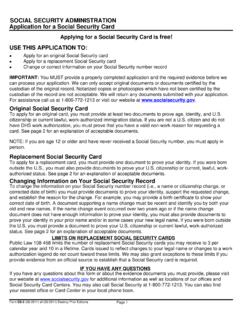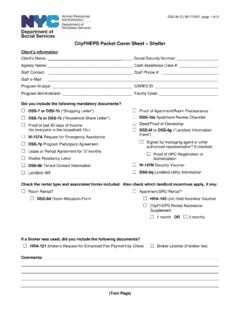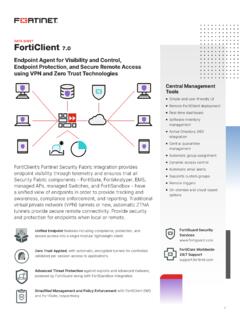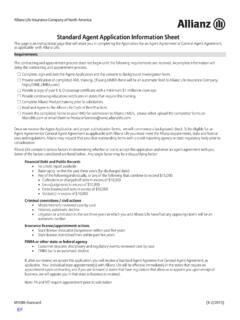Transcription of Elements of Good Documentation (A tip sheet for ...
1 Page 1 of 2 Elements of Good Documentation (A tip sheet for documenting social work service delivery) In order to comply with CFSA requirements and best practice standards it is important to document all client contacts, assessments, and the delivery of case management services. The Documentation should occur at or near the time the services were rendered. The importance of clear, concise, and organized Documentation reflects the hallmark of quality social work services and often serves as the mode of communication between a social worker, other professionals and clients . In addition, good Documentation ensures accountability, service improvement, and agency reimbursement for services rendered.
2 Documenting in the Case File When documenting data in the electronic and manual case files, the following steps are required (Who, What, When, Where, Why, How and Now what): 1. Who: Identify the social worker by name or the social worker . Also list anyone else who participated in the event or service, with the name and location of the service provider. Remember never this worker . 2. Who: Identify the client(s) that is/are receiving services. 3. What: Describe the service. Identify, in detail, the task, purpose, event ( visitation, school visit, or to obtain documents), of each service activity.
3 4. When: Record the date of services, time, and duration for the services. Documentation shall be completed within 72 hours of occurrence. 5. Where: Document the place where the service occurred ( , the client s home, CFSA office, school, court, face-to-face, by phone, etc.). 6. Why: Identify the type of service(s), the need for service(s), purpose for the service(s) ( , monitoring, assessing, coordinating, facilitating, case planning and all activities in relationship to the case plan), and why the social worker took a particular course of action. Page 2 of 2 7. How: Document the mode/medium of the meeting ( , face to face, telephone, e-mail, text messaging, etc.)
4 8. Now What: Record follow up information ( , the next steps, future planning, expected outcomes, coordination of services, relationship/response to case planning, and updating case plans.) An example of a modified contact note from FACES where all of the steps are present: Assessment: On 8-13-2009, this social worker visited with [client] at the Department of Mental Health (DMH) Community Clinic to monitor the client s progress with her mental health treatment. The social worker noticed that the client was sitting apart from other patients and appeared too depressed. This social worker spoke with the doctor, who informed this social worker that the client has been refusing to take her medication and threatening to commit suicide.
5 Based on this assessment by the [psychiatric doctor], it was determined that [client] may need to undergo an involuntary medication procedure. To coordinate the provision of this service, this social worker informed the doctor of CFSA s protocol, , contacting CFSA to request approval. The doctor stated that she will call all individuals, including the client s biological parent, in order to gain approval to involuntarily medicate the client. The doctor also reported that the psychological evaluation completed by the DMH Clinic established an Axis II diagnosis (mild mental retardation).
6 This social worker will coordinate with the client s doctors and family to establish what changes need to be made to the client s case plan and service agreement in light of the diagnosis. Who (Client): The client was identified. Who (provider of services): It is clear that the social worker actively assessed the client and collaborated with the doctor. What: The social worker assessed the client s need for additional services/treatment, coordinated the doctor s subsequent assessment of the client, and facilitated follow-up treatment for the client. When: The date of service was evident.
7 Where: The service took place at DMH Community Clinic. Why: The stated purpose of the visit was to monitor the client s mental health treatment; subsequent activities are derived from the identified need for additional services. How: The service are performed face-to-face with the client and staff at DMH Community Clinic. Now What: The social worker outlined next steps: coordinate with family and doctors, and update the Case Plan/ Service Agreement. IMPORTANT: Always document the duration of the services rendered in all narratives, including the FACES contact screen. Remember: Your Documentation makes a difference!
8






